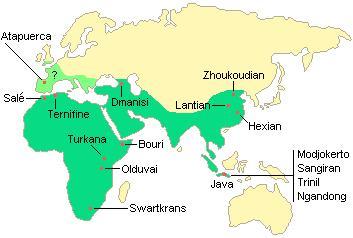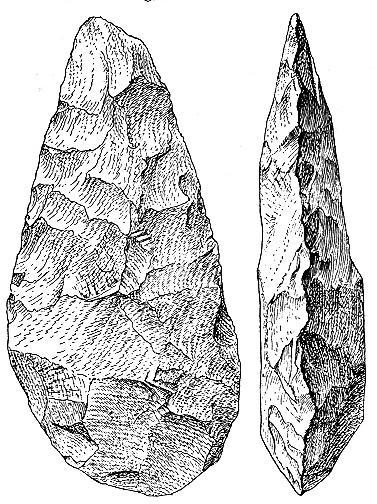 Empathy is an important human emotion, forming the foundation of the social emotions which underpin our communities. Our desire to care for one another – often at great personal cost – has allowed us to develop the society we know today. The importance of empathy has not been missed by academics, who have for centuries extolled the virtues of this “human” attribute. Even Charles Darwin (the one, the only) wrote “Nor could we check our sympathy, even at the urging of hard reason, without deterioration in the noblest part of our nature.”
Empathy is an important human emotion, forming the foundation of the social emotions which underpin our communities. Our desire to care for one another – often at great personal cost – has allowed us to develop the society we know today. The importance of empathy has not been missed by academics, who have for centuries extolled the virtues of this “human” attribute. Even Charles Darwin (the one, the only) wrote “Nor could we check our sympathy, even at the urging of hard reason, without deterioration in the noblest part of our nature.”
Yet this key aspect of human nature was apparently present in our non-human relatives. Most notably our close cousins, the neanderthals, cared for the sick and elderly. But then perhaps this is to be expected; after all the neanderthals are very close to us, only diverging from our lineage ~600 – 400,000 years ago. They produced similar technology, had complex societies and were so genetically close to modern humans we were able to interbreed with them. Maybe earlier hominins were more animalistic in nature.

The territory of Homo erectus
Well, finds from Georgia (the country, not the state) reveal our ancestors were looking after each other well before the neanderthals evolved. The remains in question come from Dmanisi, a site which revolutionised our understanding of Homo erectus. This species is famous for being the first member of our lineage to leave Africa, where they evolved ~2 million years ago. From there they spread across the old world, reaching China, Indonesia, Spain and possibly even as far north as Britain. Dmanisi showed that this dispersal occurred earlier than previously thought, ~1.85 mya.

The Acheulean handaxe Homo erectus is famous for making
Further, Homo erectus specimens from the site were a lot more archaic than later members of their species, having smaller brains (600 cubic centimeters versus ~1000 cc) and still using the primitive Oldowan toolkit. This is particularly notable because it was the large brain of H. erectus and their advanced Acheulean handaxes which some believed gave them the ability to leave Africa. This would indicate that there were multiple migrations of H. erectus, with later groups leaving Africa and spreading larger brains and handaxes throughout the world. As if that wasn’t interesting enough this also means that it isn’t as difficult to leave Africa as palaeoanthropologists had previously believed. Could this mean that earlier hominins left and we’ve simply yet to find evidence of their migration? Suddenly the simlarities between Australopithecus (Lucy) and Homo floresiensis (the hobbit) look a lot more interesting.
Now Dmanisi also shows that Homo erectus looked after one another over a million years earlier than the neanderthals were. Palaeoanthropologists uncovered a 1.77 million year old skull of an elderly Homo erectus who was completely toothless, save for a single canine. Crucially, this tooth loss occurred during their life time. The tooth sockets had completely reabsorbed into the skull, something which could only happen if they were still alive and would have taken several years. So despite the disadvantage of lacking teeth this person clearly survived for quite a while. Does this mean that they were cared for by their group?

The toothless skull from Dmanisi (left) and a computer model of the skull, showing what it should look like if the tooth sockets did not disappear (right)
Such an old individual also likely suffered from many other conditions such as arthritis that may have further compromised their ability to survive independently. Unfortunately the rest of the skeleton has yet to be discovered at the site so we cannot determine if they had lost the ability to live without aid. However few, if any, chimps have been able to survive with such an impediment. Granted Homo erectus was significantly different creature who walked upright, ate meat and used stone tools; but it still seems unlikely that these adaptations could’ve compensated for an almost total lack of teeth.
As such this find indicates that Homo erectus most likely cared for one another, enabling individuals to survive for years without teeth. Unfortunately we cannot show that such caring was required for the survival of this toothless skeleton, meaning there is still the possibility this was not the case. Nonetheless it still seems to be a strong possibility so keep an eye out for further news. It may turn out that human nature developed much earlier in our evolutionary history than previously thought.
Lordkipanidze D, Vekua A, Ferring R, Rightmire GP, Agusti J, Kiladze G, Mouskhelishvili A, Nioradze M, Ponce de León MS, Tappen M, & Zollikofer CP (2005). Anthropology: the earliest toothless hominin skull. Nature, 434 (7034), 717-8 PMID: 15815618

